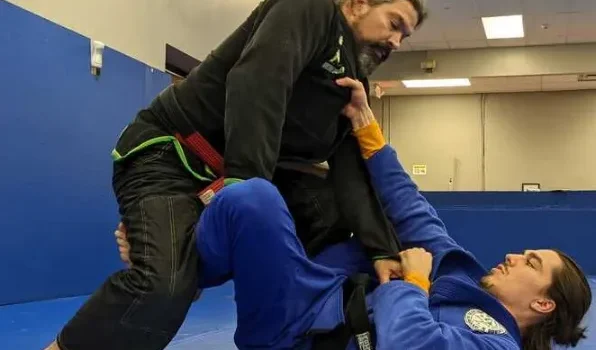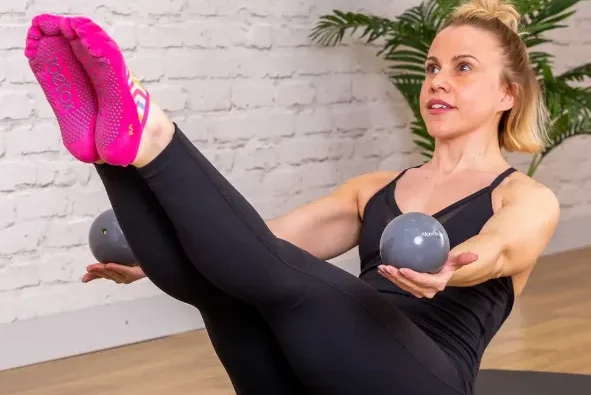
When it comes to fitness, few things rival the multifaceted benefits of Brazilian Jiu-Jitsu (BJJ). While martial arts have been practiced for centuries, it’s the rise of BJJ over the last few decades that has highlighted the profound physical and mental benefits of a ground-based combat discipline. Whether you’re looking to build strength, improve mobility, or increase functional fitness, BJJ is one of the best ways to train your body for real-world movements.
A Personal Journey with Martial Arts
I was first introduced to martial arts as a kid when my mother enrolled me in Taekwondo, hoping to instill discipline. It started as something to get me out of the house, but little did I know, it would shape my life for decades. As I grew older, I realized that martial arts were more than just about self-defense or competition. They offer valuable lessons in discipline, strength, flexibility, coordination, and mental resilience. However, like most athletes, I’ve had my fair share of injuries. Martial arts, after all, is a contact sport, and injuries are part of the game. But despite this, the benefits far outweigh the risks.
What Makes BJJ Different?
Brazilian Jiu-Jitsu has risen to prominence as one of the most effective martial arts due to its emphasis on leverage, technique, and ground control. Developed by the Gracie family in Brazil, BJJ made its mark in the martial arts world by showcasing how a smaller, weaker individual could defend themselves against a larger opponent by using skill and strategy. While it’s a fantastic combat sport, BJJ also offers a unique approach to functional fitness.
Unlike traditional strength training that focuses on building muscle size, BJJ trains the body to move efficiently in real-world situations. It improves flexibility, strength, power, and coordination—all essential components of functional fitness. The training involves movements such as rolling, crawling, and maintaining specific postures that engage multiple muscle groups simultaneously. These ground-based movements are now widely recognized in fitness circles for their effectiveness in developing overall strength and mobility.
BJJ as a Complete Fitness System
In terms of training progression, BJJ fits perfectly into a functional fitness hierarchy. Functional training involves a gradual increase in complexity, starting with simple movements and advancing to more complex, multi-joint exercises that engage both upper and lower body. This progression mirrors the way BJJ practitioners train, constantly refining their movements and adding complexity as they improve. The nature of BJJ also challenges the brain, which plays a crucial role in functional fitness. When you learn new techniques or movements, you’re not just strengthening your body, but also enhancing neural connections that improve body awareness and control.
One of the key aspects of functional training is engaging in exercises that require coordination between opposing limbs and crossing the body’s midline. In BJJ, this happens constantly. As you grapple, twist, and transition between positions, your body is required to use both sides of the brain simultaneously. This makes BJJ one of the most advanced forms of functional fitness, far surpassing traditional gym workouts in its complexity and effectiveness.
The Importance of Movement and Mobility
While strength is a critical component of BJJ, the sport is equally focused on mobility. BJJ practitioners spend a significant amount of time on the ground, transitioning between positions that require hip flexibility, shoulder stability, and core strength. Unlike traditional strength training, where movements are often isolated to one muscle group, BJJ trains multiple muscle groups at once, promoting better overall body movement.
However, BJJ is also tough on the body. The physical demands of rolling, sparring, and intense training sessions can lead to muscle tightness, particularly in the back, neck, and hands. To combat this, it’s essential to dedicate time to recovery. Stretching, foam rolling, and exercises that improve flexibility and strength in the neck, back, and forearms are crucial to prevent injury and ensure long-term progress.
Why BJJ Should Be Part of Your Fitness Routine
If you’re looking for a workout that builds functional strength, enhances flexibility, and challenges your cardiovascular system, BJJ is one of the best options available. It’s a full-body workout that also promotes mental focus and discipline. The added benefit is the sense of camaraderie you’ll experience in a BJJ gym. Training with others fosters a community where everyone is working towards mutual improvement, making it not only a great way to get fit but also an excellent opportunity to make lasting friendships.
Incorporating BJJ into your fitness routine will help you develop the physical skills needed for a variety of movements, from lifting and carrying to climbing and running. It teaches your body to move with control and precision, enhancing your overall fitness and well-being. So, whether you’re looking to compete in martial arts or simply improve your functional fitness, BJJ offers a comprehensive approach that can help you achieve both goals.
Conclusion
Brazilian Jiu-Jitsu is much more than a martial art—it’s a powerful tool for functional fitness. From its emphasis on mobility and strength to its ability to challenge both the body and mind, BJJ offers unparalleled benefits for anyone looking to improve their overall fitness. Whether you’re a beginner or an advanced practitioner, there’s always something to learn and improve. So, if you’re looking for a dynamic and engaging way to enhance your functional fitness, consider adding BJJ to your training regimen.












